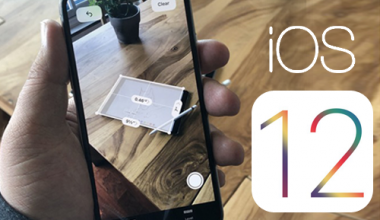News Analysis: As Microsoft prepares to unleash the Kin One and Kin Two on Verizon Wireless customers next month, we’re left wondering why so many integral features haven’t made their way to the devices.
Microsoft has dabbled in social networking, but most of its efforts have resided in the desktop and online where it attempts to take on Google in search and advertising. Perhaps that’s why it’s so surprising that Microsoft is attempting to appeal to social-networking fans with the Microsoft Kin One and the Microsoft Kin Two.
The devices, which will be available on Verizon Wireless’ network in May, attempt to bridge the gap between the Web and mobile phones. But whether or not they actually do this successfully remains to be seen.
As excited as some folks are for the Microsoft Kin smartphones, others are scratching their heads. Both the Microsoft Kin One and the Microsoft Kin Two are lacking in several areas that should limit their appeal to the wider consumer market.
Considering there are so many other devices that consumers can choose from, it’s debatable just how much they will appeal to the average person.
A solid argument can be made that Microsoft Kin devices are ill-fated in a market where innovation and uniqueness are coveted above all else.
But simply saying that isn’t doing either device justice.
That’s why it’s time to take a look at why 10 important features missing from the Kin phones could mean trouble for Microsoft once they’re released.
Carrier ubiquity
According to Microsoft, the Kin One and Kin Two will only be available on Verizon Wireless’ network in the U.S. and Vodafone’s network in the U.K. That’s a problem. Although Apple has done a good job working with just one carrier, it’s the exception in the mobile market.
For any other company, providing phones on as many carriers as possible is always the best strategy. After all, limiting a target market for the sake of a business deal just isn’t smart.
Lack of Uniqueness
What makes the Kin unique in any way? The device features a multi-touch display, a slide-out physical keyboard, and a mobile operating system that lacks several key features that most consumers are currently looking for.
In order to be successful in the increasingly competitive mobile marketplace, companies need to develop phones that are unique. Apple’s iPhone is unique. Even Google’s Android platform is unique.
Unfortunately for Microsoft and Sharp, the devices’ designer, there’s nothing so unique about the Kin phones that would make users want to pick them over anything else.
Flash, anyone?
Apple has been getting hit hard by tech pundits and critics who say that its devices should support Adobe’s Flash standard. But if Apple gets that treatment, so should Microsoft. Neither of the Kin phones will support Flash (or Microsoft’s own Silverlight, for that matter).
Considering the device lacks an app store, that means that the vast majority of videos and games currently available on the Web will not be accessible from the Kin. Like Apple, Microsoft says that isn’t a big deal, but we all know that it is. And it’s a major omission.
It’s game-less
Part of the value of a next-gen mobile device is its ability to play games. And since Microsoft is marketing the Kin phones as social-networking devices, it would only seem to make sense that the devices would boast social games for users to play with each other. Think again.
According to Microsoft, Kin phones will not support games. And although they will have access to music, games are missing. Given the success of gaming on the iPhone, it will be extremely hard for Microsoft to justify that decision.
No app store
As mentioned above, the Kin phones will not support an app store. That means that third-party developers won’t be able to bring apps to the device and owners will only be able to use the applications that come bundled on the Kin out of the box. Microsoft should know better.
The company has spent years explaining why Windows Mobile devices lack in app support and now it’s delivering a product that lacks third-party apps? It doesn’t make sense. Mobile applications have quickly become a necessity in the mobile marketplace. Apple, Google, and RIM all offer apps.
Even Microsoft plans to offer an App Store with its Windows Phone 7 software. Why it wouldn’t have third-party app support with Kin is anyone’s guess.
Communication without IM
Part of being a social device is allowing users to communicate with each other. That means Kin owners will be able to correspond with MySpace, Facebook, and Twitter friends from the devices.
But in an odd move, Microsoft has decided that instant messaging doesn’t fit in its plans; therefore the company said that Kin devices will not support instant-messaging.
Since there’s no app store, third-party developers can’t bring clients to the device. If communication is what Kin phones are all about, instant messaging should have made its way to those devices.
Where’s the innovation?
Take a look at either Kin device and attempt to find something that shows innovation. The devices are rather boring compared to many of the mobile products currently on the market. The iPhone and Google Nexus One offer something innovative that other products on the market have yet to muster.
Because of that, any device that comes after them are expected to also do something innovative to make a mark. It might not be fair to those vendors, but it is an expectation that consumers have. The Kin phones do nothing of the sort. And it could hurt them when they hit store shelves next month.
No data tethering
This might not come as a surprise, but Kin phones lack support for data tethering. That immediately pushes the enterprise out of the equation and could conceivably annoy some consumer road warriors that like having the option of connecting to the Web through their mobile phones.
That said, a lack of data tethering support isn’t a deal breaker. Currently, the iPhone, like several other phones on the market, doesn’t support tethering. But if Microsoft had struck a deal with Verizon to bring tethering to the product, it might have helped it appeal to more customers that are looking for something new and fresh from the products.
Social, but no calendar?
Microsoft has gone out of its way to say that its Kin phones are designed for younger social network users. But a key component in social networking is planning events that friends can attend with each other.
Wouldn’t it have been nice to plan a get-together with Facebook friends and add that event to a calendar built into the Kin software? Yep. But it won’ t happen. The Kin doesn’t have a built-in calendar app, which means users will need to do scheduling somewhere else. It’s awfully counter-intuitive for a social-networking phone to not have a calendar app.
A cool factor
Microsoft is attempting to market the Kin devices to cool, hipster twenty-somethings that spend time at clubs and communicate with their friends on social networks. That makes sense. But it seemed to forget one element: to those people, a phone is an extension of who they are.
They want to look “cool” thumbing away on a Kin and sending messages to friends. The Kin doesn’t strike me as a cool device. It’s functional and it’s design is nice, but the cool factor is non-existent. The iPhone is a cool device. The Kin One and Kin Two just don’t seem to cut it.
Resource:
http://www.eweek.com/c/a/Mobile-and-Wireless/10-Key-Features-Missing-from-Microsoft-Smartphones-529371/




Comments are closed.